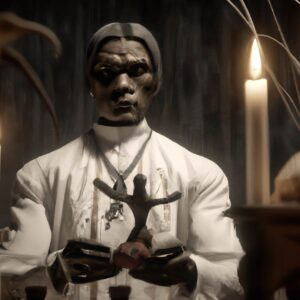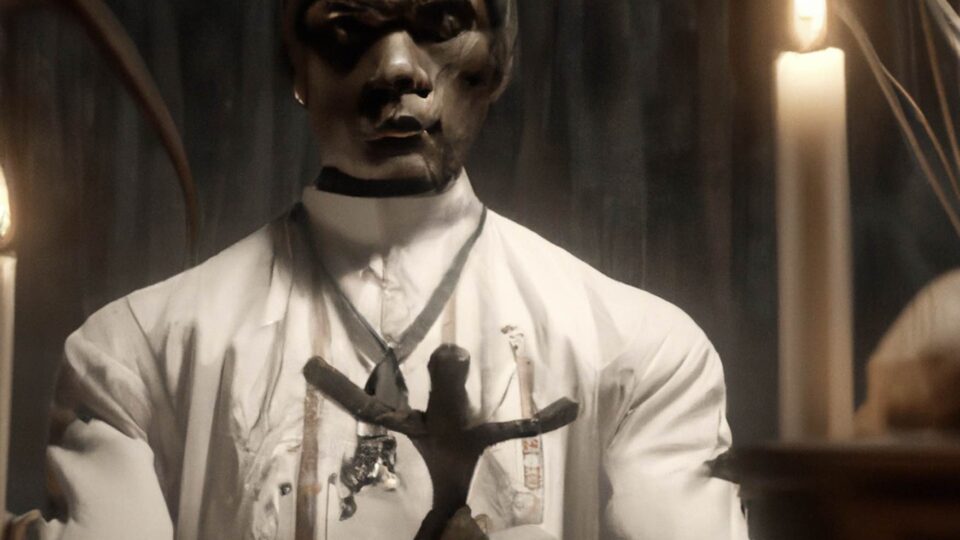Voodoo, also known as Vodou or Vodun, is a syncretic religion that originated in West Africa and was brought to the New World by enslaved Africans. It is practiced today primarily in Haiti, but also has followers in other countries, including the United States. Catholicism, on the other hand, is a major branch of Christianity that originated in the Mediterranean region and is now practiced worldwide. Despite their different origins and geographical locations, Voodoo and Catholicism have some surprising similarities.

One similarity between Voodoo and Catholicism is their belief in a supreme being. In Voodoo, this supreme being is referred to as Bondye, or “good God,” and is considered to be the creator of all things. Bondye is believed to be distant and unknowable, and as such, Voodoo practitioners do not worship him directly. Instead, they turn to a pantheon of lesser deities, or loa, who act as intermediaries between Bondye and humans. These loa are revered and prayed to for help and guidance in daily life.
Catholicism also believes in a supreme being, known as God, who is considered to be the creator of all things. Catholics worship God through a variety of rituals and practices, including prayer, Mass, and the sacraments. Like Bondye in Voodoo, God is often seen as distant and unknowable, and Catholics believe that they can access his grace and mercy through intermediaries such as the Virgin Mary, the saints, and the clergy.
Another similarity between Voodoo and Catholicism is their use of religious symbols and objects in ritual and devotion. In Voodoo, practitioners often use various objects, such as altar cloths, candles, and statues, as well as items such as food, drink, and perfumes, to represent the loa and help invoke their presence. These objects are believed to have spiritual power and are used in various rituals, including possession trance and divination.
Similarly, Catholicism employs a wide range of religious symbols and objects in its rituals and devotions. These include the cross, the rosary, and the Eucharist, as well as objects such as holy water, incense, and vestments. These objects are believed to have spiritual significance and are used in various rituals, such as Mass, the sacraments, and prayer.
Another similarity between Voodoo and Catholicism is their belief in the afterlife and the importance of ancestor veneration. In Voodoo, practitioners believe in an afterlife in which the spirits of the deceased can influence the living. As such, Voodoo practitioners often honor and communicate with their ancestors, seeking their guidance and protection. This is done through various rituals and practices, such as offering food and drink to the ancestors and consulting with them through divination.
Catholicism also believes in an afterlife and the importance of ancestor veneration. Catholics believe in heaven, hell, and purgatory, and that the souls of the deceased can be helped or hindered by the actions of the living. Catholics often pray to their ancestors and ask for their intercession, and many Catholics also visit the graves of their ancestors and leave offerings or pray for their souls.
Despite these similarities, Voodoo and Catholicism also have some significant differences. One major difference is their beliefs about the nature of the divine. In Voodoo, the loa are seen as separate and distinct deities, each with their own unique personality, attributes, and domain of influence. In contrast, Catholicism believes in the doctrine of the Holy Trinity, in which God is one being in three persons: the Father, the Son, and the Holy Spirit.
Another difference is the role of religious leaders in the two faiths. In Voodoo, practitioners often consult with a variety of religious specialists, such as houngans (priests) and mambos (priestesses), who are believed to have the ability to communicate with the loa and facilitate rituals. These religious leaders are respected and revered in the Voodoo community and play a central role in the religion.
In Catholicism, the clergy, including bishops, priests, and deacons, hold a central role in the faith. These religious leaders are responsible for leading Mass, administering the sacraments, and providing spiritual guidance to their congregations. They are also responsible for interpreting and teaching the teachings of the Catholic Church.
Another difference between Voodoo and Catholicism is their approach to salvation and redemption. In Voodoo, practitioners believe that they can achieve redemption and spiritual growth through their own efforts, such as by living a virtuous life, performing good deeds, and participating in rituals. In contrast, Catholicism teaches that salvation and redemption are only possible through the grace of God, which is received through faith in Jesus Christ and the sacraments.
Despite these differences, Voodoo and Catholicism have had a complex and often tumultuous relationship throughout history. In the past, Catholicism has been critical of Voodoo, viewing it as a pagan and superstitious belief system. However, in recent years, there has been a greater effort on the part of the Catholic Church to understand and engage with Voodoo and other African diaspora religions. Many Catholic theologians and scholars have recognized the importance of respecting and learning from these traditions, and have worked to promote dialogue and understanding between the two faiths.
In conclusion, while Voodoo and Catholicism have some significant differences, they also share some surprising similarities. Both religions believe in a supreme being, the importance of ancestor veneration, and the use of religious symbols and objects in ritual and devotion. While their approaches to salvation and redemption differ, there has been a growing effort on the part of the Catholic Church to understand and engage with Voodoo and other African diaspora religions. Despite their complex history, Voodoo and Catholicism can learn from each other and work towards greater understanding and respect.

